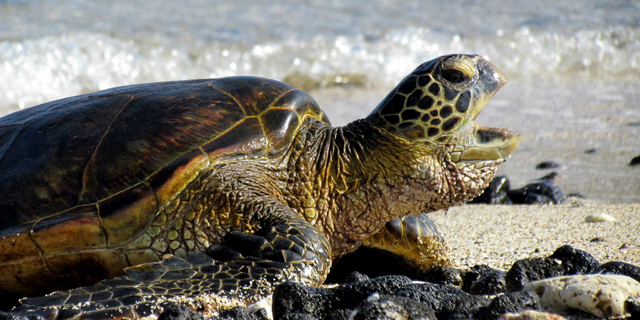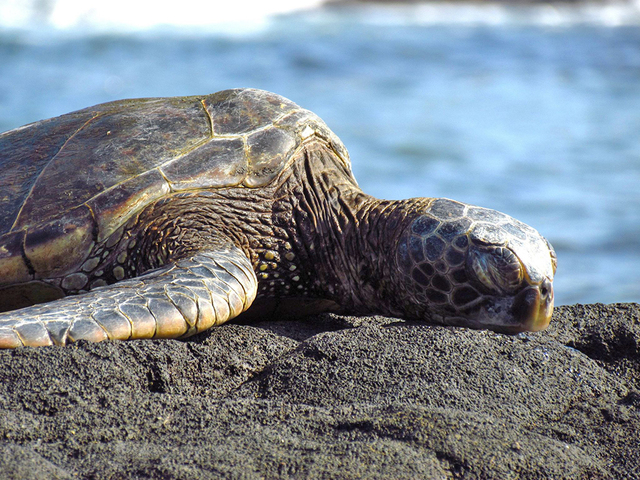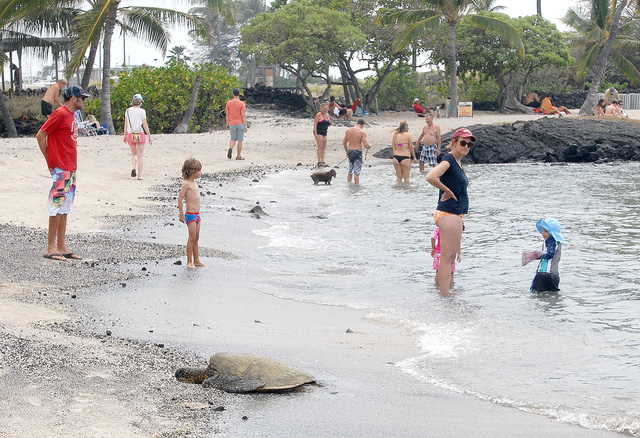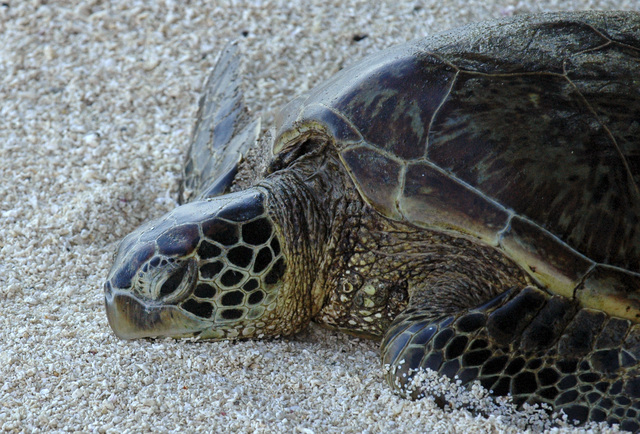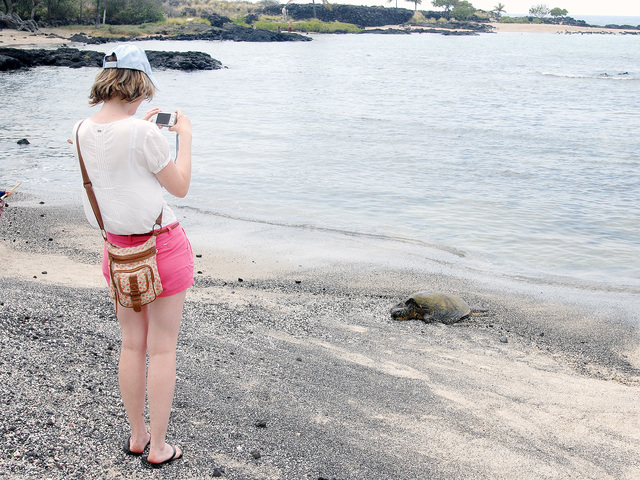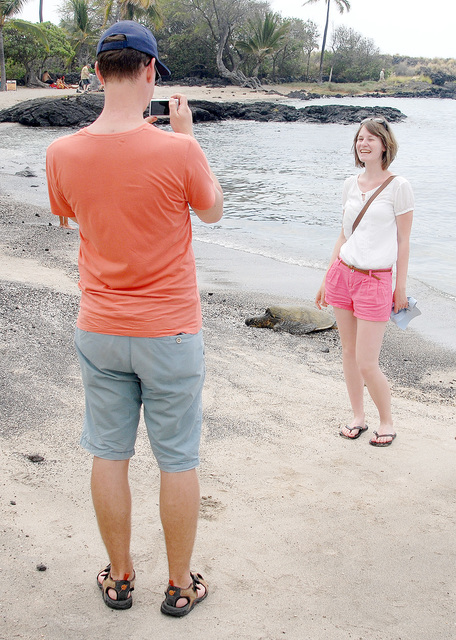The threatened green sea turtles around the Hawaiian Islands will be managed separately from other populations under a plan floated Friday by federal agencies. But the status of Hawaii’s turtles as threatened under the Endangered Species Act won’t change under
The threatened green sea turtles around the Hawaiian Islands will be managed separately from other populations under a plan floated Friday by federal agencies. But the status of Hawaii’s turtles as threatened under the Endangered Species Act won’t change under the plan, despite a petition for delisting by an organization of Hawaii civic clubs.
The proposal, which will open to public comment for 90 days starting on Monday, would establish 11 distinct population segments worldwide, allowing regulators to tailor conservation policy to local conditions.
“Hawaii would be its own population segment,” said Pat Opay, head of the endangered species branch of NOAA’s Pacific Islands Regional Office, in an interview.
The segment and associated management practices would cover 4,000 nesting females, 96 percent of which are in the French Frigate Shoals. While researchers have found an encouraging 4.8 percent annual increase in the numbers of nesting females there, climate change, disease and interaction with fishing gear still pose dangers to the turtles, Opay said.
The Association of Hawaiian Civic Clubs petitioned NOAA Fisheries in 2012 to distinguish Hawaii’s turtles as a distinct population segment, and to remove it from listing under the ESA to allow for state and local stewardship of the species. The agency did find the population to be a distinct one, according to NOAA. But regulators kept the turtle under ESA protections, citing a small, highly localized nesting population and threats from climate change and sea level rise.
Rebounding sea turtle numbers along the Pacific Coast of Mexico and Florida are prompting the U.S. Fish and Wildlife Service and NOAA Fisheries to propose easing the turtle’s standing in those two regions from endangered to threatened under the ESA. But threats from development, harvesting, pollution and climate change are also causing regulators to call for an endangered designation that will heighten protections for populations through the Central West Pacific, which has fewer than 6,500 nesting females, and the Central South Pacific, which has fewer than 3,000 nests.
“Identifying distinct population segments across the green sea turtle’s range would provide the flexibility necessary to help individual populations based on localized threats,” said Eileen Sobeck, NOAA assistant administrator for fisheries, in a statement. “NOAA and our partners continue to study green sea turtles to ensure that our conservation and management decisions are driven by the best available science.”
If approved, the rule changes won’t go into effect for up to a year, Opay said.
The proposal is set to be published in the National Register on Monday. A public hearing is set for April 8 at 5:30 p.m. at the Japanese Cultural Center in Honolulu.
Submit comments, information or data identified by the code NOAA-NMFS-2012-0154, in writing, to: Office of Protected Resources, NOAA Fisheries, 1315 East-West Highway, Silver Spring, MD 20910; or Green Turtle Proposed Listing Rule, U.S. Fish and Wildlife Service, North Florida Ecological Services Office, 7915 Baymeadows Way, Suite 200, Jacksonville, FL 32256.
Comment electronically via the Federal eRulemaking Portal. Go to regulations.gov, enter NOAA-NMFS-2012-0154 in search window, click the “Comment Now!” icon, complete the required fields, and enter or attach your comments.
To learn more about sea turtles, go to fisheries.noaa.gov/pr/species/turtles.


